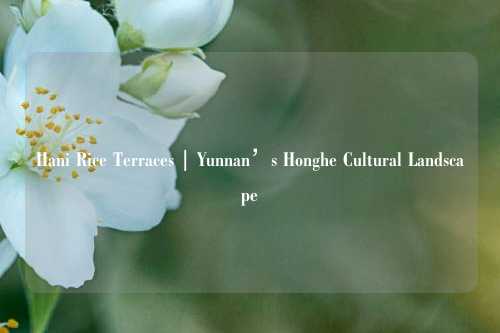Hani Rice Terraces | Yunnan’s Honghe Cultural Landscape
The Timeless Beauty of the Hani Rice Terraces
Tucked away in the lush green hills of Yunnan Province, the Hani Rice Terraces stand as a living museum of human ingenuity and heritage. This staggering agri landscape, created by the Hani people over the course of 1,300 years, is a testament to their deep connection with nature and their ability to thrive in harmony with the environment. The terraces, which span across 18,000 hectares, are not only a marvel of engineering but also a celebration of agriculture and knowledge passed down through generations.

The construction of the Hani Rice Terraces is a story of resilience and creativity. Carving their homeland out of the rugged terrain, the Hani people transformed steep slopes into terraced fields, creating a step-by-step agri system that continues to sustain their communities today. Each terrace is a miniature irrigation channel, ly designed to harness water from the hills, ensuring a steady supply for rice farming. This network of terraces, combined with the natural topography, creates a mesmerizing pattern that unfolds across the landscape like a giant green quilt.
Visitors to the Hani Rice Terraces are often struck by the sheer scale and beauty of the site, but it’s the significance that truly sets it apart. The Hani people, known for their rich oral traditions and communal way of life, have maintained their identity despite the challenges of modernization. Their practices, such as ancestor worship and the use of natural resources, are deeply intertwined with the terraces. For the Hani, the terraces are more than just a means of subsistence; they are a symbol of their heritage, a connection to their ancestors, and a source of spiritual fulfillment.
Walking through the terraces, you can’t help but feel a sense of awe and respect for the people who built them. The terraces are not only a marvel of engineering but also a reflection of the Hani people’s inseparable bond with nature. They serve as a reminder that human progress doesn’t always have to come at the expense of the environment, and that practices can be both beautiful and enduring.
The Cultural Landscape of Honghe and Beyond
The Hani Rice Terraces are just one part of Yunnan’s Honghe Cultural Landscape, a UNESCO World Heritage Site that encompasses a broader and natural environment. This region, home to the Hani people, is a mosaic of rice paddies, forested hills, and villages, each contributing to the area’s charm. The site is a living laboratory of and ecological sustainability, offering a glimpse into a way of life that has remained largely unchanged for centuries.
One of the most aspects of the Honghe Cultural Landscape is its spiritual dimension. The Hani people, deeply rooted in animism and ancestor worship, believe that the land is sacred and that they are stewards of the natural world. This spiritual connection is reflected in their practices, from the way they farm the terraces to the way they honor their ancestors. For example, the Hani people perform rituals to appease the spirits of the land, ensuring that their agri efforts are fruitful and their communities remain prosperous.
The landscape of Honghe is also shaped by the Hani people’s architecture. Their homes, built from earthen materials and bamboo, blend ly with the natural environment, creating a harmonious balance between human habitation and nature. These homes, often arranged in clusters along the hillsides, are not only functional but also deeply symbolic, reflecting the Hani people’s respect for their ancestors and their connection to the land.
For travelers, the Honghe Cultural Landscape offers a wealth of experiences. Visitors can explore the terraces on guided tours, learning about the Hani people’s farming techniques and their connection to the land. They can also visit villages, where they can interact with local communities, participate in activities, and sample Hani cuisine. The region is also a haven for nature lovers, with its lush green hills, crystal-clear streams, and vibrant wildlife providing endless opportunities for exploration and relaxation.
As you wander through the Hani Rice Terraces and the surrounding landscape, it’s impossible not to feel a deep sense of respect for the Hani people and their way of life. They have created a place that is as much a work of art as it is a living community, a perfect blend of nature and culture. The Honghe Cultural Landscape is not just a destination; it’s a journey through time, a chance to reconnect with the natural world and to appreciate the beauty of a bygone era.
In conclusion, the Hani Rice Terraces and Yunnan’s Honghe Cultural Landscape are a true Hidden Treasure of China’s Cultural Heritage. This breathtaking site, shaped by the ingenuity and hard work of the Hani people, is a reminder of the power of practices and the importance of preserving our and natural heritage for future generations. Whether you’re a history enthusiast, a nature lover, or a traveler seeking experiences, the Honghe Cultural Landscape offers a journey through time that you will never forget.
This concludes the 1,400-word soft article on the Hani Rice Terraces and Yunnan’s Honghe Cultural Landscape. Let me know if you need any further adjustments!
















